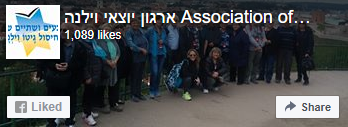Seventh Fort
 The Seventh Fort was the first concentration camp in Nazi-occupied territories after the beginning of the war with the Soviet Union. German orders to concentrate the Jews of Lithuania into a separate camp were received on 29 June 1941. The next day, the decision had been made during the meeting of the Lithuanian Provisional Government to set up a Jewish concentration camp in the Seventh Fort. There had been appointed newly formed Tautinio Darbo Apsaugos Batalionas (known as TDA) for camp protection and murder of its prisoners. SS-Standartenführer Karl Jäger, commander of Einsatzkommando 3, was in charge of the prisoners and their executions. Up to 5,000 victims were killed in the fort's territory from 30 June 1941 until its closure on 10 August 1941. The remaining prisoners were transferred to Kaunas Ghetto. Most of them were Jewish residents of Kaunas. The largest number of victims were killed on 4 July (463 people) and 6 July (2514 people). Murdered bodies were thrown into the hole left from the half-caponier. Later other victims had been buried there too, near the fort wall. Main perpetrators of the bloody massacre were TDA battalion officers, together with their subordinates. The famous people among the victims were rabbi Elchonon Wasserman (1875–1941) and Lithuanian poet Vytautas Montvila (1902–1941).
The Seventh Fort was the first concentration camp in Nazi-occupied territories after the beginning of the war with the Soviet Union. German orders to concentrate the Jews of Lithuania into a separate camp were received on 29 June 1941. The next day, the decision had been made during the meeting of the Lithuanian Provisional Government to set up a Jewish concentration camp in the Seventh Fort. There had been appointed newly formed Tautinio Darbo Apsaugos Batalionas (known as TDA) for camp protection and murder of its prisoners. SS-Standartenführer Karl Jäger, commander of Einsatzkommando 3, was in charge of the prisoners and their executions. Up to 5,000 victims were killed in the fort's territory from 30 June 1941 until its closure on 10 August 1941. The remaining prisoners were transferred to Kaunas Ghetto. Most of them were Jewish residents of Kaunas. The largest number of victims were killed on 4 July (463 people) and 6 July (2514 people). Murdered bodies were thrown into the hole left from the half-caponier. Later other victims had been buried there too, near the fort wall. Main perpetrators of the bloody massacre were TDA battalion officers, together with their subordinates. The famous people among the victims were rabbi Elchonon Wasserman (1875–1941) and Lithuanian poet Vytautas Montvila (1902–1941).
Starting September 1941, the Seventh Fort become a concentration camp for prisoners of war known as Stalag 336 or Stalag 336 F. Initially, the camp housed war prisoners of the Ukrainian nationality. There is evidence that about 1,500 Ukrainian prisoners died from the cold, diseases, and malnutrition in the winter of 1941 to 1942. The exact number of war prisoners dead and buried at the Seventh Fort is unknown. The fort was also used to train German auxiliary personnel.
Soviet period
Former barracks, headquarters and warehouses of the fortress were used by Soviet Army regiments. Forts had been turned into storage of the war reserve and soldier deployment places. Pioneer unit engaged in restoration of bridges blown during World War II was based in the Seventh Fort. Later, the fort were transferred to the 29th Voentorg (military supply) of the Baltic Military District. Warehouses and Voentorg administration were located in the fort barracks and powder cellars. During this period, the historic fort suffered much damage: the defensive ditch was filed with trash and dirt, building facades were damaged, drainage system was destroyed, left artillery yard was paved with asphalt, garages for auto vehicles storage were built.
Independent Lithuania
After the Russian Army left Lithuania in 1993, the Seventh Fort was transferred to the Lithuanian National Defence Volunteer Forces (KASP). There, three companies of the 22nd KASP Battalion were deployed from 1993 to 2007. The Lithuanian government decided to sell the fort as did not find the use to it after discontinue of this battalion.
Fort's reconstruction was started in spring 2009 when Lithuanian non-profit organization Military Heritage Centre became the owner of the Seventh Fort. One of the first projects carried out in the fort was scientific and field research, restoration of casemates, and removal of asphalt paving. Additionally, low-value garages were demolished, drainage system was restored which allowed the rear caponier to become accessible once again.
The Seventh Fort opened its gates to the visitors in spring 2011 for the first time in its history. The same year, graves of the genocide victims were found in the right wing of the fort. The site was cleaned of plants and trash and a memorial route was created. Since 2012, the Seventh Fort is a member of the Lithuanian Museum Association. There are created expositions of Kaunas Fortress history and artillery evolution in the barrack casemates. There are organized tours, school educational programs and various topics events intended to remember important events of Lithuanian history in the fort.
From: Wikipedia



